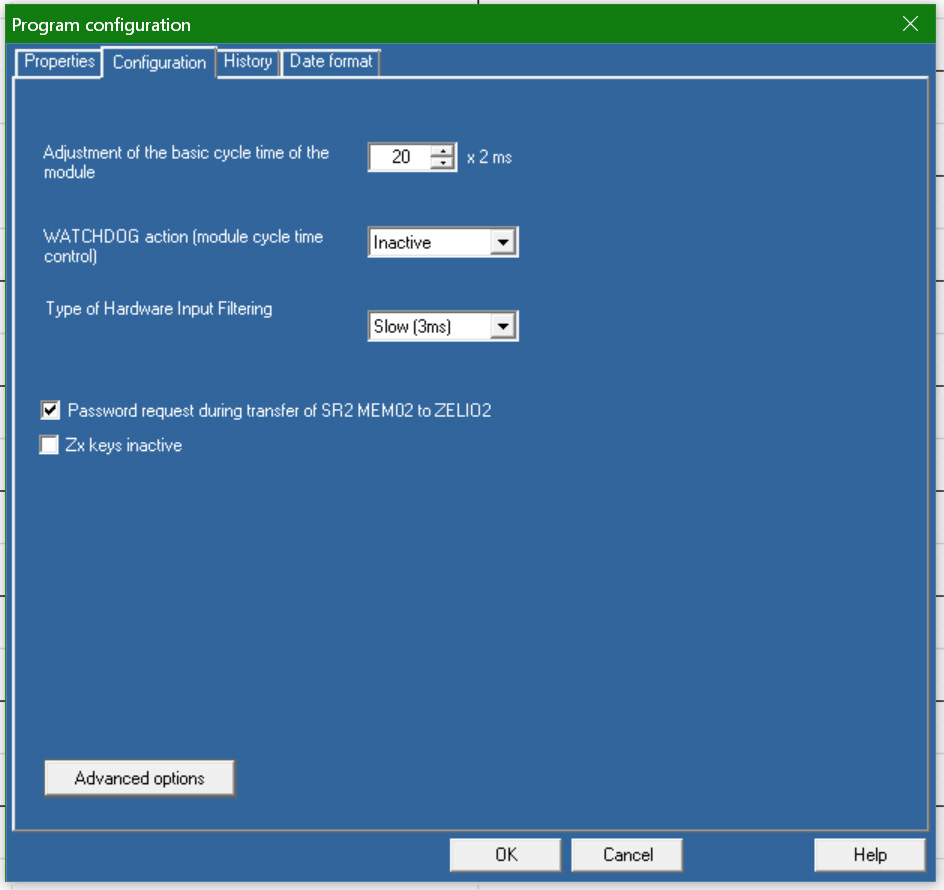Emerald_Yautja
Member
Hello,
I used a Schneider Electric SR3B261B PLC to create a trivia machine (as I call it). Basically 20 buttons that let contestants ring in to trivia. There is a display that shows the number of the person who rang in. It works pretty well unless people press the buttons at exactly the same time. Then it shows 2 results at the same time. Usually resulting in a display of 18 when really it was 12 and 14 that rang in, for example.
The PLC has options for:
"Adjustment of the basic cycle time of the module." and "Type of Hardware Input Filtering."
Which I assume would make the PLC operate faster and avoid two inputs triggering at the same time. If I change the setting and update the changes do not keep. I appear unable to change it past 20 x2 ms and slow (3ms).
Is that a correct assumption that changing this would fix it?
Why can I not change this? Is it because I have so many inputs (14 or so) and Outputs (16 or so)? or because my program uses nearly all 240 lines of ladder logic allowed?
What can I do to fix this?

I used a Schneider Electric SR3B261B PLC to create a trivia machine (as I call it). Basically 20 buttons that let contestants ring in to trivia. There is a display that shows the number of the person who rang in. It works pretty well unless people press the buttons at exactly the same time. Then it shows 2 results at the same time. Usually resulting in a display of 18 when really it was 12 and 14 that rang in, for example.
The PLC has options for:
"Adjustment of the basic cycle time of the module." and "Type of Hardware Input Filtering."
Which I assume would make the PLC operate faster and avoid two inputs triggering at the same time. If I change the setting and update the changes do not keep. I appear unable to change it past 20 x2 ms and slow (3ms).
Is that a correct assumption that changing this would fix it?
Why can I not change this? Is it because I have so many inputs (14 or so) and Outputs (16 or so)? or because my program uses nearly all 240 lines of ladder logic allowed?
What can I do to fix this?






